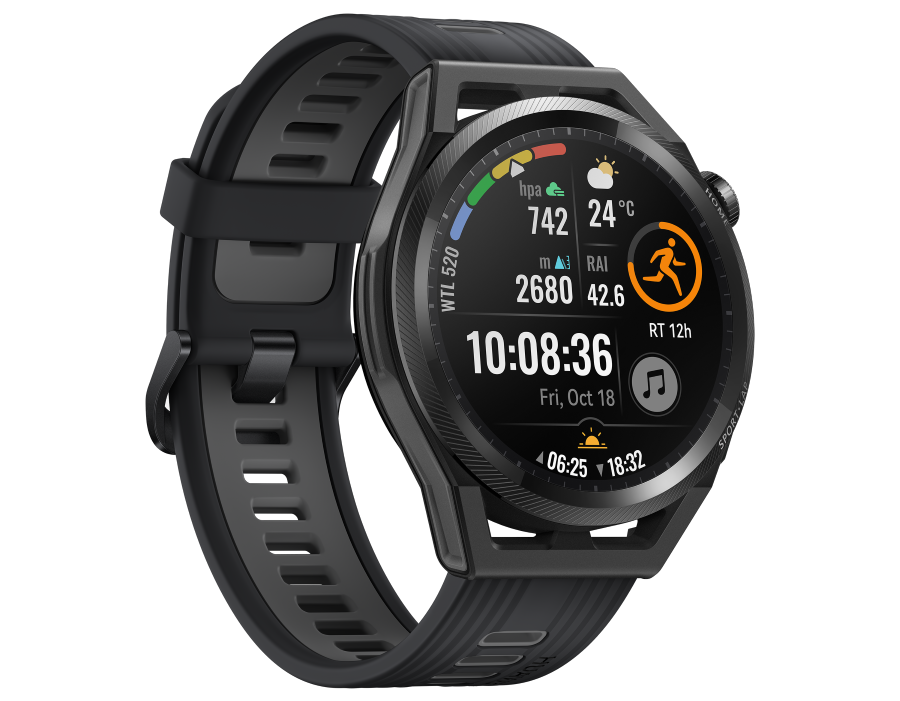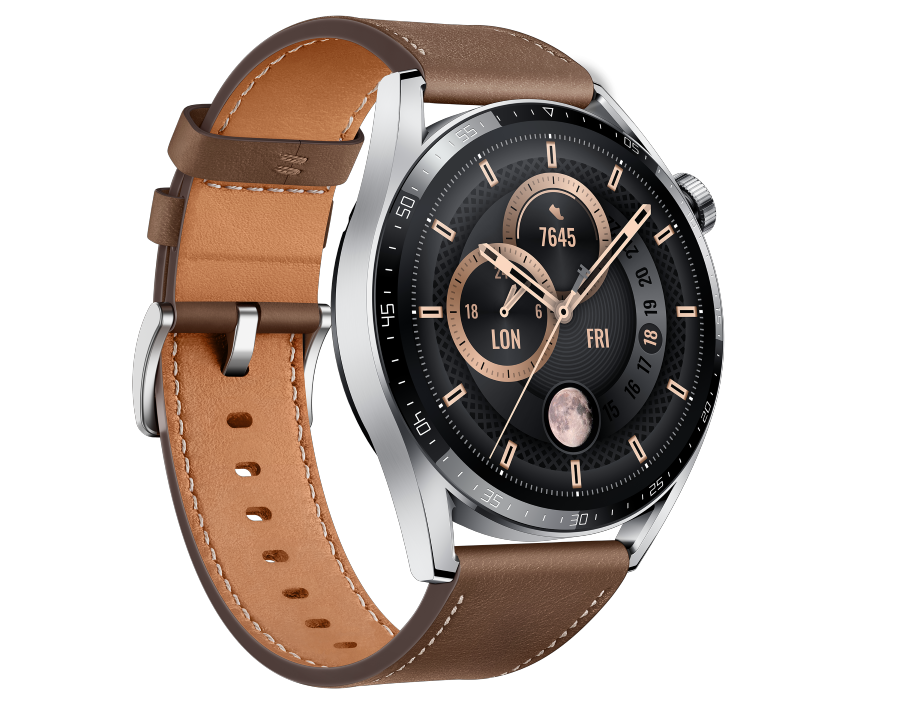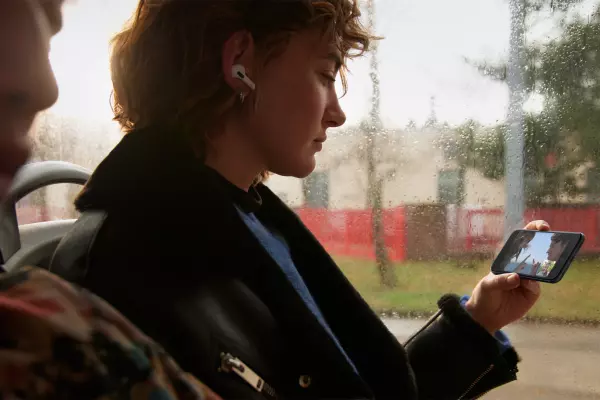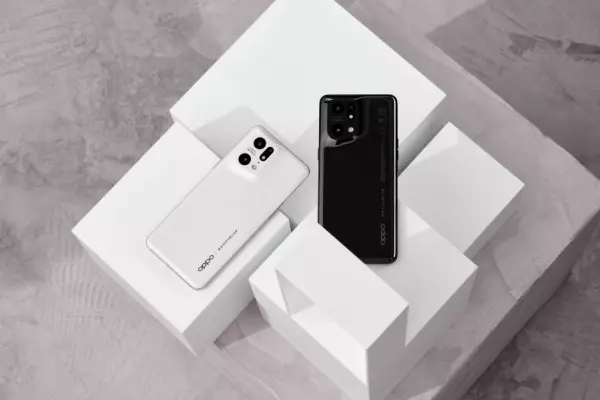Huawei has taken a battering in both the business and consumer technology press in the past couple of years.
A US trade ban has left its smartphones without access to Google services or the Google app store, meaning the company doesn’t sell them in New Zealand any more.
You might expect, then, that its new smartwatches, which are on sale here, are hampered, too. I’m pleased to say this is not the case, though the Watch GT3 and GT Runner are best described as fitness trackers that look like smartwatches.
On Android, the biggest barrier is having to download the latest version of the Huawei Health app from Huawei’s own app store, AppGallery, which must itself be downloaded. The version on Google Play doesn’t support either watch (thanks, trade ban). It’s actually easier to pair the watches to an iPhone.
If you don’t mind the Android hurdle, the GT watches offer week-long battery life and very good exercise tracking.
The 46mm-size Watch GT Runner is the more expensive of the two, at $579, and, as the name suggests, is geared towards runners. Its software and pre-loaded watch faces display run and recovery information, training loads and more.
The watch and strap are also more lightweight than the $449 46mm GT3, although this model also comes in a smaller 42mm version that costs $399. All models are available from JB Hi-Fi, PB Tech, and Noel Leeming.
Huawei says there are thousands of watch faces you can download and use made by them and by third parties. I dug the black and lime green default watch face, but when I showed my wife, she said it looked like “a Spy Kids gadget”.
The rest of the interface is also clearly copying the Apple Watch, particularly the grid of app icons and the use of a rotating crown to scroll through menus. But it doesn’t matter too much, and there are tons of zany information-heavy watch faces to choose from alongside the health features.
 The GT Runner has all the bells and whistles.
The GT Runner has all the bells and whistles.
Happy trails
The first time I went for a run with the Runner, it announced very loudly from the built-in speaker my progress and pace after one kilometre, scaring me senseless. It was so loud. I didn’t know how to turn it off, so it blurted out information at every following kilometre, too, annoying fellow park users.
This might be welcome if I’d connected wireless headphones to the watch, which is an option, but I dived into the settings post-run and muted the feature permanently.
Swiping left on the crisp, bright OLED screen brings up different information panels. I like the flattering one that told me: “Your running ability is higher than 96.9% of your peers.” I’ve no idea where that data comes from, or if there’s any data behind it at all, but it was nice to see the watch bigging me up.
The heart-rate sensor records your recovery rate, too, and feeds all the data captured back into the Huawei Health app, where you can peer at average pace, speed, cadence, stride-length, heart-rate and elevation metrics, as well as blood-oxygen levels thanks to the sensor embedded on the underside of the device.
Though the on-watch software is less running focused on the GT 3, its exercise recording abilities are practically identical, giving all the same metrics in the app post-run. It also has a skin temperature recording feature the GT Runner lacks, and I prefer its slightly heavier polished metal design in the black version I tested.
Both track sleep if you wear them to bed. The insights are quite interesting and give you basic tips (go to bed earlier, duh), but I’m not sure how scientific they are considering they’re largely based on movement, though heart rate is taken into account, too. It’s similar to Fitbit’s sleep score feature.
 The GT3 46mm is fully waterproof.
The GT3 46mm is fully waterproof.
Supercharged
Both watches can also record cycling, swimming (thanks to full waterproofing), tramping, rowing, weights, and strength work.
There’s also a neat feature when using GPS to track a run, walk, or cycle, which creates a breadcrumb trail via aerial view on the watch so if you get lost, you can retrace your steps.
Clever things like this are worth the small initial hurdle to install the Huawei Health app that might put some off, though downloading from the AppGallery rather than the Play Store does raise a security question that I don’t have the answer to. You also have to create and use a Huawei ID to get into the Health app.
Alongside the excellent tracking and attractive design, the best thing about both watches is their incredible battery life. Both can last a full week of use without a charge, which obliterates the one day you can get from an Apple Watch and even the four or five of a Fitbit Sense – but there’s a good reason for this.
The Apple Watch, and other smartwatches such as Samsung’s Galaxy Watch 4, are true integrated smartwatches that can download companion apps, reply directly to messages on the wrist, make payments, and more.
The Huawei watches are fitness trackers without any of these features, though you can control the music or audio playing on your phone. The difference is they look like traditional circular watches. This is a great move – the GT 3 can pass as a dress watch but you don’t have to charge it every day and it can track your fitness.
Both models can take incoming calls via the speaker or connected headphones, and you can hand pick which apps you’d like to receive wrist notifications for, but you can’t interact with them – you must reply on your phone.
In this way, they are fitness trackers with limited smarter capabilities, but the trade-offs are worth it, especially the battery life. Longevity takes a hit if you enable the always-on display that shows the time constantly rather than when you raise your wrist, but I found I still had to charge it only about once a week.
Finish line
Both the GT 3 and GT Runner are solid fitness trackers, but I hesitate to call them smartwatches. They are great health devices that look like regular watches and have superb battery life.
If you use an iPhone, I really do recommend an Apple Watch instead, despite it being oddly easier to connect the GTs to an iPhone compared to Android. The Apple Watch SE costs from $479 and will integrate much better with your phone, its apps, and their notifications and has a more polished software experience.
If you’re an Android person, then either GT is a good choice if you don’t mind downloading apps from Huawei’s app store. I prefer the look and feel of the GT 3 and it records the same metrics in the Health app as the Runner, but the Runner has more running-focused software on the watch itself.
It’s a good pick over a Samsung Galaxy Watch for the design and battery longevity, but you might prefer a Fitbit Versa 3 or Fitbit Sense, which also offer several days of battery and an app you don’t have to faff about to download on Android.













